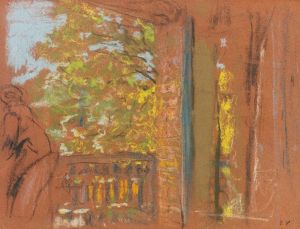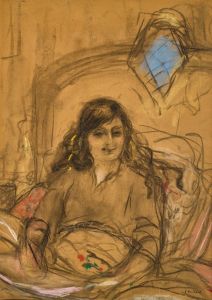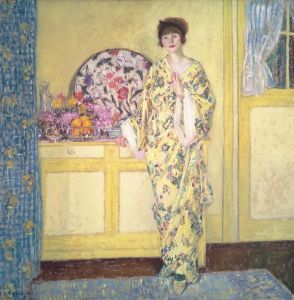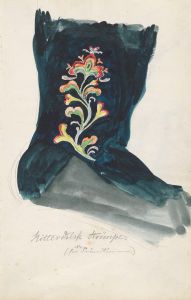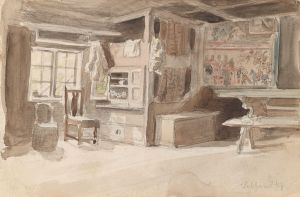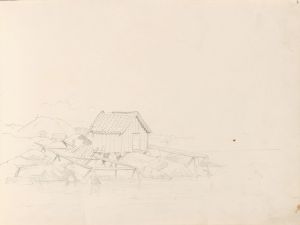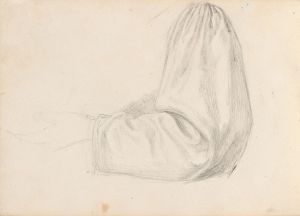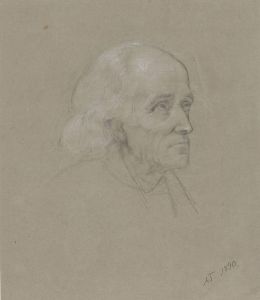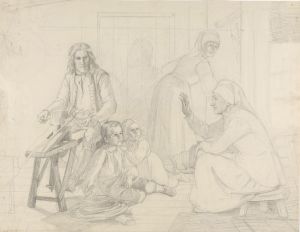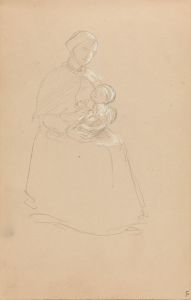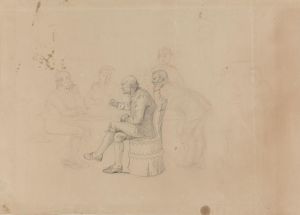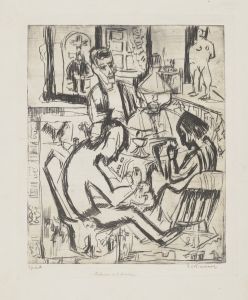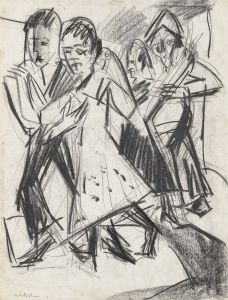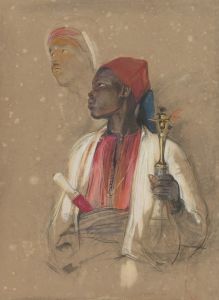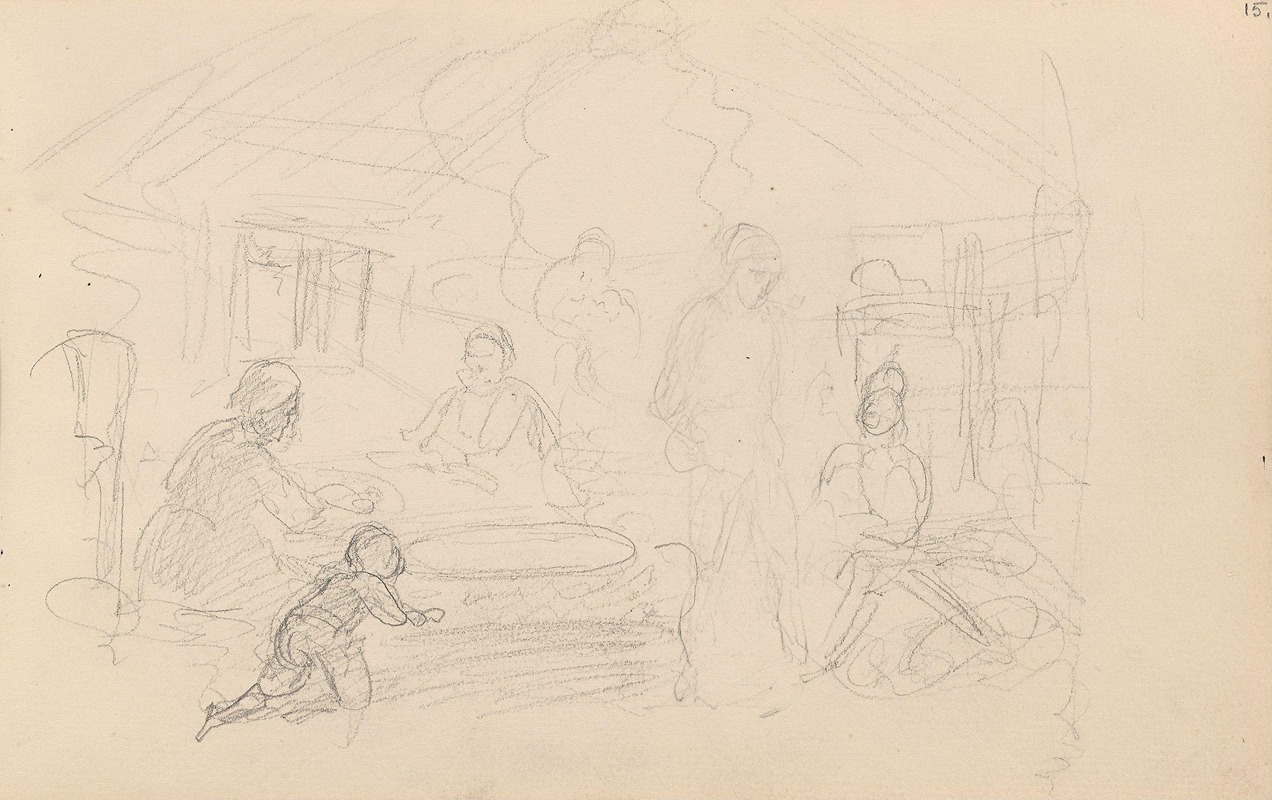
Figurer i et ildhus
A hand-painted replica of Adolph Tidemand’s masterpiece Figurer i et ildhus, meticulously crafted by professional artists to capture the true essence of the original. Each piece is created with museum-quality canvas and rare mineral pigments, carefully painted by experienced artists with delicate brushstrokes and rich, layered colors to perfectly recreate the texture of the original artwork. Unlike machine-printed reproductions, this hand-painted version brings the painting to life, infused with the artist’s emotions and skill in every stroke. Whether for personal collection or home decoration, it instantly elevates the artistic atmosphere of any space.
Adolph Tidemand was a prominent Norwegian painter in the 19th century, known for his detailed and evocative depictions of Norwegian folk life and traditions. One of his notable works is "Figurer i et ildhus," which translates to "Figures in a Smokehouse." This painting is a fine example of Tidemand's ability to capture the essence of rural Norwegian culture during his time.
Adolph Tidemand was born on August 14, 1814, in Mandal, Norway. He studied at the Academy of Art in Copenhagen and later at the Kunstakademie Düsseldorf, which was a significant center for art education during the 19th century. Tidemand became associated with the Düsseldorf school of painting, which emphasized detailed realism and often focused on historical and genre scenes.
"Figurer i et ildhus" reflects Tidemand's interest in the everyday lives of Norwegian people, particularly those living in rural areas. The painting depicts a scene inside a traditional Norwegian smokehouse, a structure used for smoking meat and fish, which was an essential part of food preservation in Norway's cold climate. Smokehouses were common in rural Norwegian communities, and they played a vital role in sustaining families through harsh winters.
In the painting, Tidemand portrays several figures engaged in various activities within the smokehouse. The attention to detail in their clothing and expressions provides insight into the customs and lifestyle of the time. Tidemand's use of light and shadow adds depth to the scene, highlighting the smoky atmosphere of the interior and the textures of the wooden structure.
Tidemand's work is characterized by its ethnographic accuracy and its ability to convey the cultural identity of Norway. He often traveled throughout the country, sketching and gathering material for his paintings. His dedication to authenticity is evident in "Figurer i et ildhus," as he meticulously captures the nuances of Norwegian rural life.
The painting is part of Tidemand's broader oeuvre, which includes other well-known works such as "Haugianerne" (The Haugeans) and "Brudeferden i Hardanger" (The Bridal Procession in Hardanger), the latter of which he co-painted with Hans Gude. These works collectively contributed to a growing sense of national identity in Norway during the 19th century, as they celebrated the country's unique cultural heritage.
Adolph Tidemand's paintings, including "Figurer i et ildhus," played a significant role in the Norwegian romantic nationalism movement. This movement sought to promote and preserve Norwegian culture and history at a time when Norway was in a union with Sweden. Through his art, Tidemand helped to foster a sense of pride and appreciation for Norway's rural traditions and way of life.
Today, Tidemand's works are held in high regard and can be found in various museums and collections, including the National Gallery in Oslo. His paintings continue to be appreciated for their historical significance and their artistic merit, offering a window into the past and preserving the cultural legacy of 19th-century Norway.





